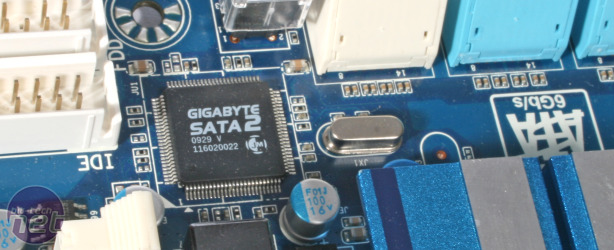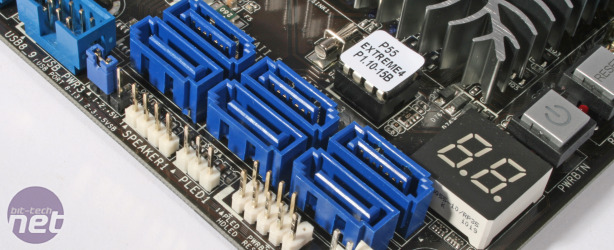Are On-Board SATA 6Gbps Ports Fast Enough?
October 28, 2010 | 07:27

Performance Analysis
The most important information to take away from this feature is whether or not it’s beneficial for a motherboard to have SATA 6Gbps ports. If the on-board SATA 6Gbps ports tend to be fast, they will make a difference, but if they’re always pathetically slow, the fact that the board supports SATA 6Gbps is irrelevant – for super-fast storage, you’d still need to buy an add-in card.We’re happy to report that for the most part, we found that the on-board SATA 6Gbps ports on all our test motherboards were very fast. Regardless of which CPU or chipset we used, almost all the SATA 6Gbps ports proved faster than the SATA 3Gbps ports in every test.
However, two SATA 6Gbps ports – the pair of Marvell controllers of the ASRock P55 Extreme4 – failed to keep up with the rest in most tests. In the 1MB and 4MB tests, these ports were limited to a read speed of 204-208MB/sec and a write speed of 123-124MB/sec, while the other SATA 6Gbps ports read the same data at well over 300MB/sec and wrote it at around 230MB/sec.
This is doubly surprising, as the pair of SATA 6Gbps controllers on the ASRock proved very fast when handling 4KB data, with a read speed of over 140MB/sec compared to the sub-100MB/sec speed of most other controllers. This is due to ASRock wiring each of the two controllers to the Southbridge via a single PCI-E 1.1 lane, therefore limiting the bandwidth available to each to a theoretical maximum of 250MB/sec.
Take some of that away to allow for arbitration and processing overheads, and you can see why the same controllers that threw over 330MB/sec at our C300 in other boards couldn’t deliver more than 208MB/sec with the ASRock board. The ASRock’s four ports aside, it was only in the 4KB test that the SATA 6Gbps ports failed to emerge at the top of our performance charts. However, even in this test some ports exhibited excellent read speeds of over 100MB/sec.
The ASRock’s controllers previously mentioned are two examples, but the Marvell 9128 controller on the Gigabyte GA-P55A-UD3R was just as fast as these freakishly speedy ports. The Gigabyte board’s Marvell-powered ports also performed exceptionally well in the other two tests.
Gigabyte’s own-branded SATA II ports were universally rubbish on all the motherboards, whichever test we ran speeds never exceeded 130MB/sec. Despite these ports having all kinds of hard disk-related wizardry such as driver-free RAID to entice you to attach storage devices to them, they’re so slow that we wouldn’t recommend using them. The Gigabyte SATA II controller chip is based on a JMicron design. It’s a fairly old chip now, as it’s been used on Gigabyte boards for a couple of years.
While we weren’t surprised by the SATA II chip’s poor showing, we were impressed by the speed of JMicron’s JMB362 SATA 6Gbps controller. The fashion for SATA 6Gbps certainly favours Marvell’s 9128 chip, as the Gigabyte GA-X58-UD7 is the only board to use the JMicron chip for its SATA 6Gbps ports.
In the 4KB test, it gave a reasonably poor showing of 65-67MB/sec, but in the 1MB and 4MB tests, the JMB362 kept pace with its SATA 6Gbps siblings. We saw a read speed of 306MB/sec in the 1MB test, while other on-board SATA 6Gbps controllers managed between 304MB/sec and 343MB/sec. The SATA 3Gbps controllers could only manage a 1MB read speed of up to 257MB/sec, so the JMB362 gave our C300 SSD a healthy speed boost.

MSI MPG Velox 100R Chassis Review
October 14 2021 | 15:04










Want to comment? Please log in.